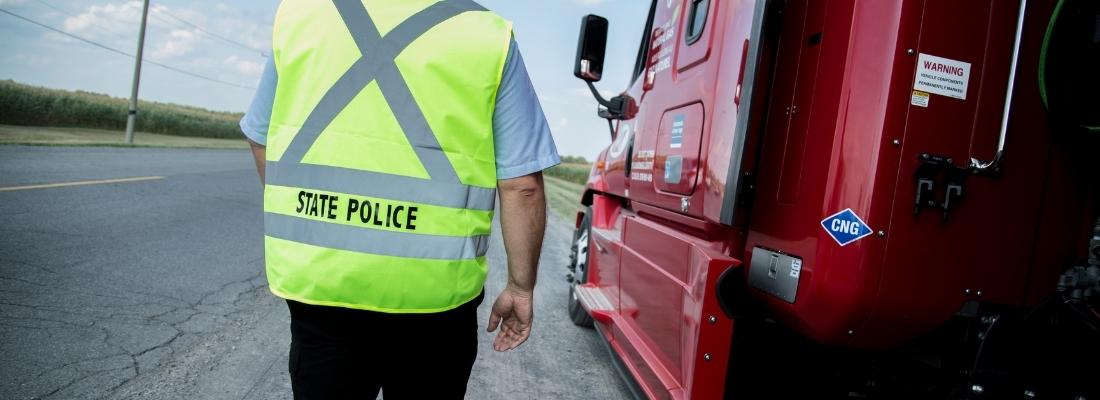The North American Standard Inspection Program from the Commercial Vehicle Safety Alliance (CVSA) has 8 different levels of inspection. The most common levels of inspection during the annual safety blitz are Level I and Level II.
Level I is a 37-step inspection procedure that involves examining the motor carrier’s and driver’s credentials, record of duty status, mechanical condition of the vehicle, and any hazardous materials/dangerous goods that may be present. Level II is a driver and walk-around vehicle inspection involving the inspection of items that can be checked without physically getting under the vehicle.
How to successfully pass an inspection:
- Make sure safety becomes a lifestyle culture and not just a policy
- Train everyone on best practices
- Give employees the proper tools
Build a strong safety culture
How can you ensure that safety is part of your daily business culture? First, by using appropriate guidance and constant encouragement to assist operators in becoming the high-level professionals they all are. Here, constancy is key. It is not enough to post safety rules and expect people to follow them without reminders. A safety meeting once a year is not sufficient either. Safety must be part of your corporate culture.
To build a strong safety culture, you need:
- Commitment – Everyone, starting from the top and all throughout the organization, must be committed to safety.
- Communication – This is a key element for promoting a safety culture throughout the organization.
- Technology – Investment in technology improves fleet safety.
- Accountability – Use and act on your data to hold drivers and personnel accountable for safety.
- Training & HR – Perform safety training at onboarding, but do not forget the importance of periodic ongoing training. Have a firm HR/safety policy, and don’t deviate from it
- Benchmarking – This allows to track your safety efforts.
Watch safety and compliance webinar
Train users on best practices
Using the best practices produces better results. From a safety perspective, training drivers on how to perform a complete DVIR inspection is the best way to ensure they do it properly. Ensure there’s a clear and concise procedure for inspections of vehicles and trailers. Proper training in general along with constant reviews allows everyone to stay current while instilling ongoing safe behavior.
Use the right technology and tools
Leveraging technology is also a good practice that not only saves time and accelerates processes, but enhances safety. For example, ISAAC’s system will enable sending images directly to maintenance shops, helping ensure the required repairs are completed quickly and that no unsafe vehicles are on the road.
Providing your drivers with the proper tools is also essential. With an ELD that is automatically updated to respect federal and industry regulations, you’ll have peace of mind in matters of compliance and best practices behavior.
Be prepared for your next safety inspection
When you put safety at the forefront of your business, you show everyone you care. You show your commitment to safety. Over the years, I have seen good and bad choices made for different reasons. As a previous owner-operator, I constantly had to decide: “Do it now or later? Is it safe, or does it need repair?”
Remain viable
We have just gone through possibly the most challenging couple of years where the whole industry was under extreme scrutiny while being asked to run full out. As the projected forecast does not call for a drastic slowdown, some things can be done. Many companies have made hard decisions to stay viable, but we should never allow safety to become one of the elements to push aside. Using innovative technology that helps operators maximize their income by turning miles will guide us to even safer roads, better working conditions, and a safer environment.

About the author
Dave Storry
Technical Trainer, ISAAC
Dave Storry, Technical Trainer at ISAAC, is a retired Canadian Armed Forces mechanic “Arte et Marte”. He has had his professional Class 1 operator license for 40+ years but operated large vehicles for over 42 years as part of his military trade. Dave has over 4 million miles as a single and team driver and says he has seen it all! Having owned and operated commercial trucks all over North America, he has spent over 20 years training drivers both commercially and privately. This experience has allowed him to maintain a “can do” attitude, exceed expectations, and constantly set the bar high.










